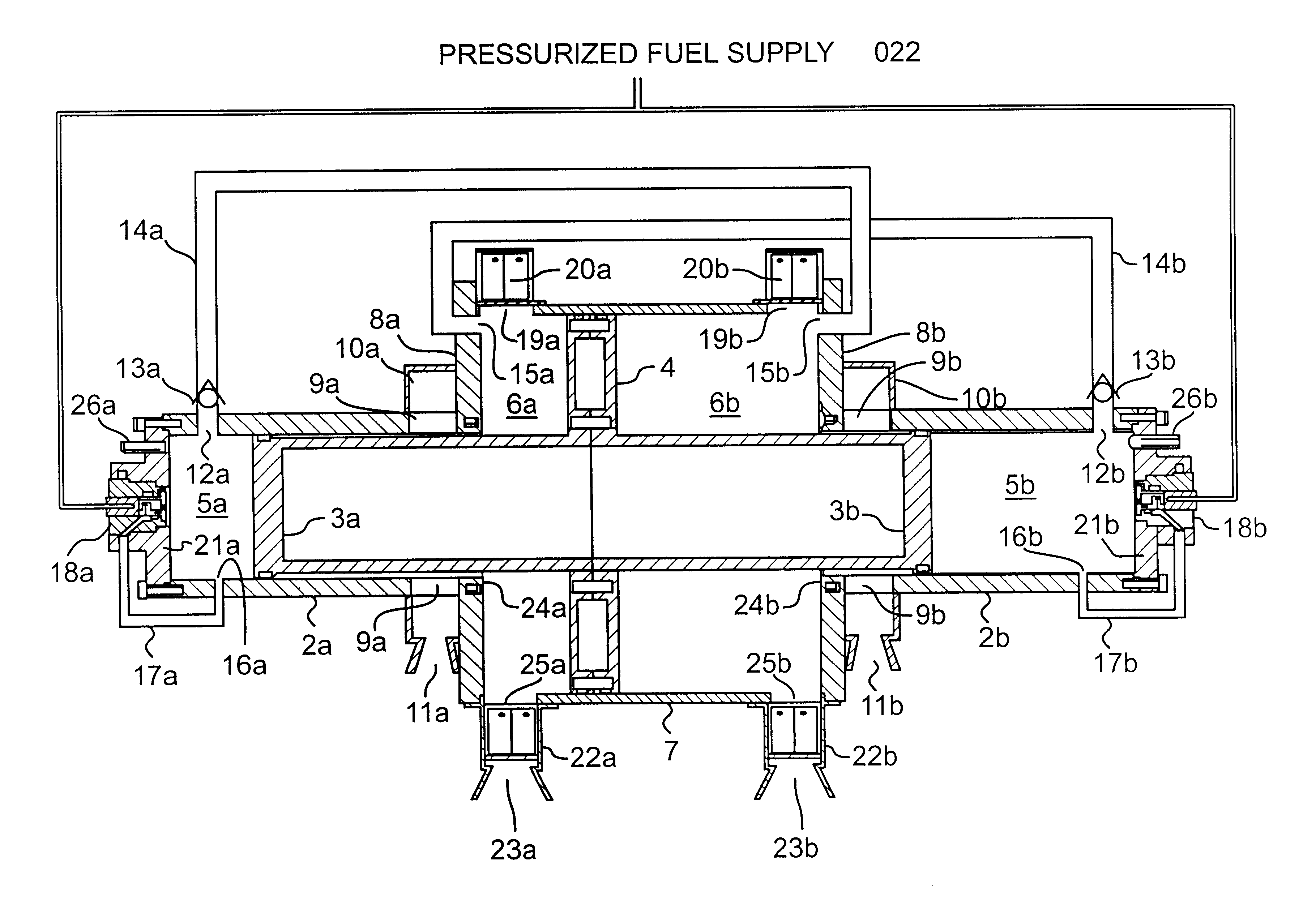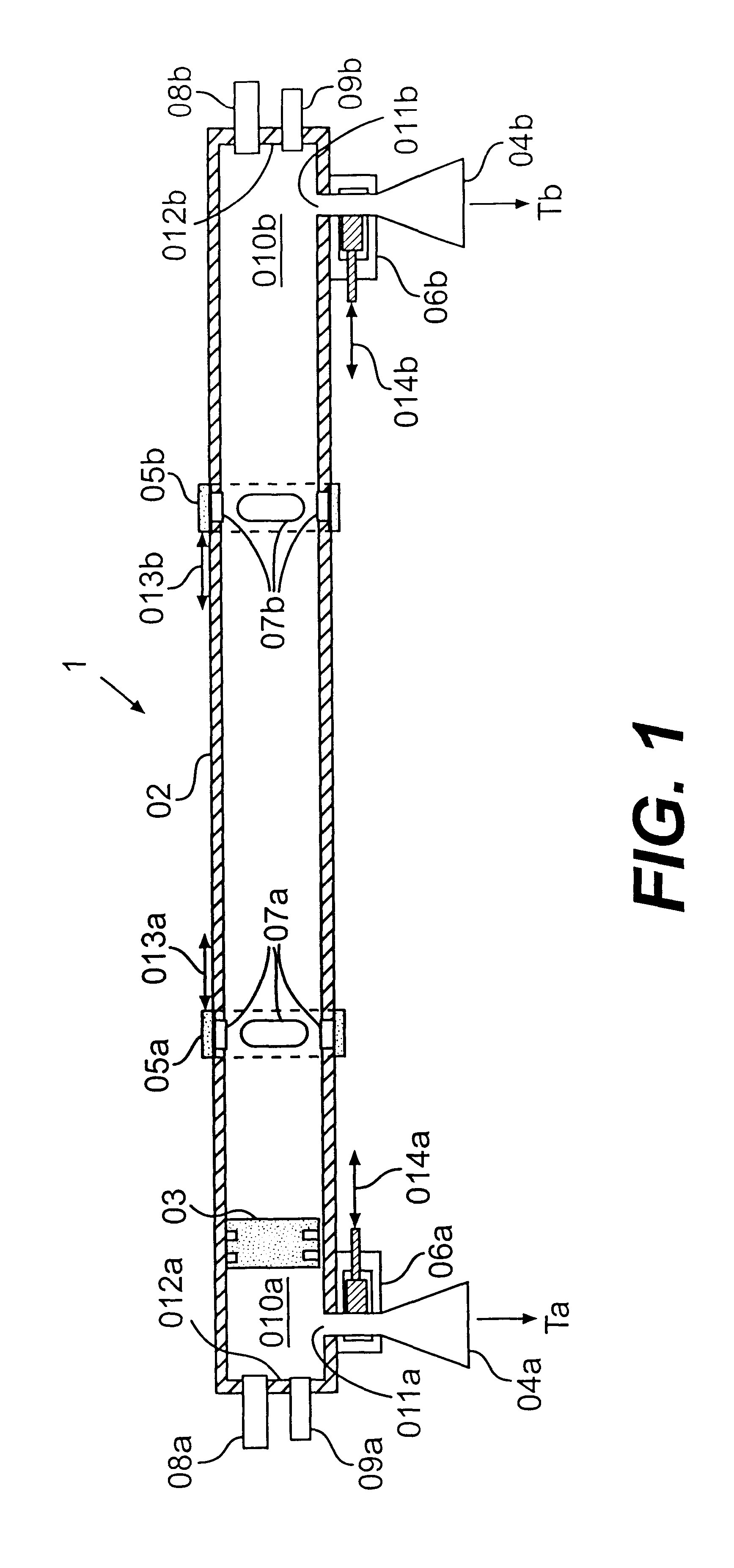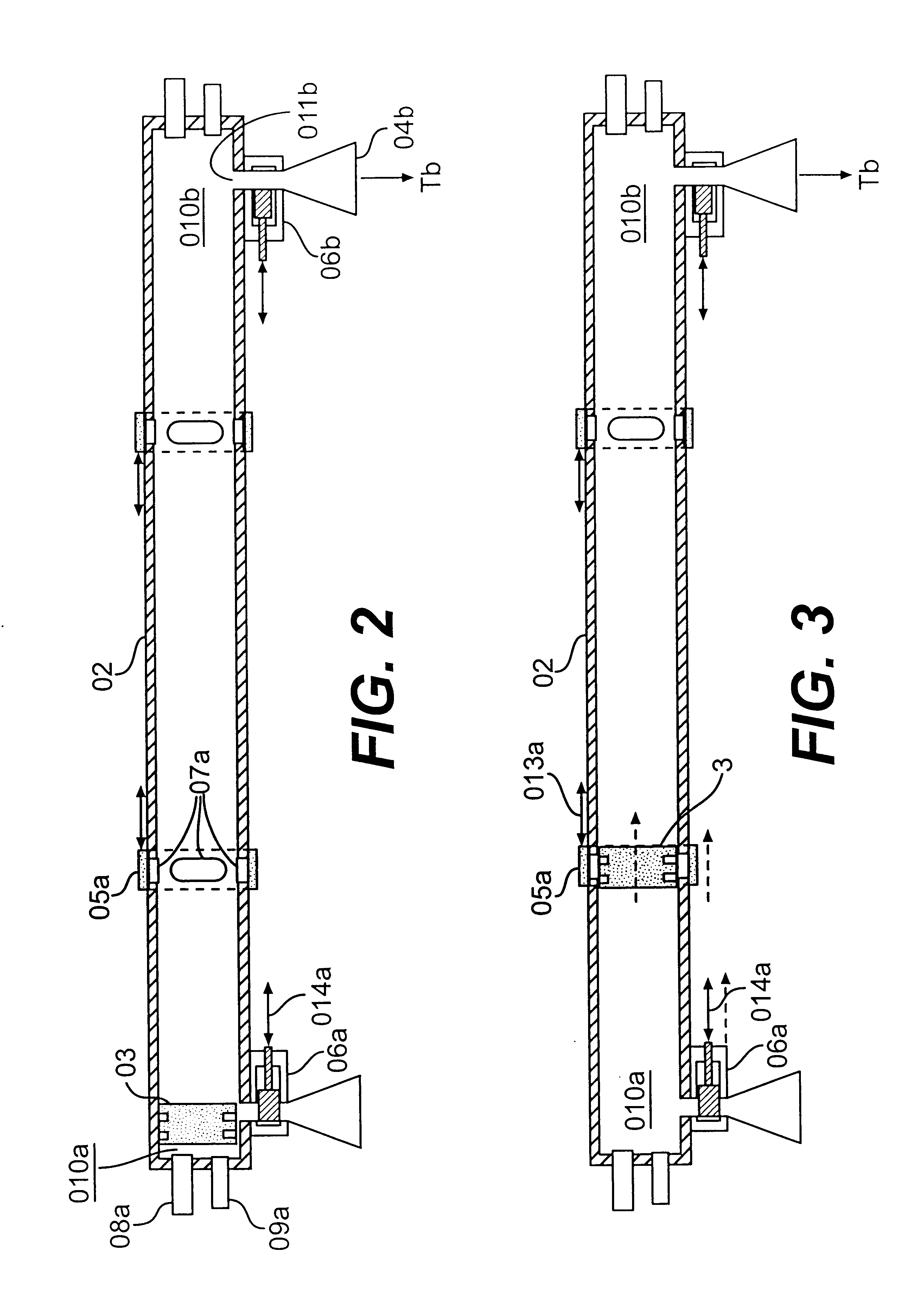Free piston engine and self-actuated fuel injector therefor
- Summary
- Abstract
- Description
- Claims
- Application Information
AI Technical Summary
Problems solved by technology
Method used
Image
Examples
second embodiment
Operation of Second Embodiment Engine
Operation of the engine will be described here, while construction and operation of the preferred fuel injector 18 will be described in following paragraphs.
Assume that piston 3a is in its compression position to the left of cylinder 2a as shown in FIG. 13. When piston 3a is in its compression position, the volume of chamber 5a is at its minimum, and compression pressure therein is at a maximum. Fuel injection has been accomplished and combustion is underway. Piston 3b has opened chamber 5b to exhaust through ports 9b, exhaust duct 10b and exhaust nozzle 11b. Thrust chamber 6a has completed expulsion of its thrust gas and its pressure is approaching atmospheric. Thrust chamber 6b has completed its air intake stroke and is near atmospheric pressure. Injector gas control port 16a is at atmospheric pressure through exhaust port 9a. Check valve 13a is closed since thrust chamber 6b is at low intake pressure.
As the combined piston ( 3a-4-3b) begins mo...
first embodiment
Starting of the engine may be accomplished via pneumatic starter valves 26a, 26b. Specifically, a source of compressed air may be connected to at least one of the pneumatic starter valves 26a or 26b. For example, compressed air may be passed through pneumatic starter valve 26a and enter combustion chamber 5a thereby moving the piston (3a-4-3b) to the right until the operational state shown in FIG. 17 is achieved. At this point, the fuel injector 18b injects fuel into combustion chamber 5b, combustion begins, and the engine starts. Alternatively, a conventional igniter can be added to at least one of the cylinder heads 21a, 21b and utilized as a starting means with appropriate utilization of the pneumatic starter valves to inject compressed air to move the combined piston 3a-4-3b to a desired position, actuate a fuel injector 18 and thereby start the engine. Furthermore, pneumatic starter valves could also be added to the engine 1 of the first embodiment as an alternative method of s...
PUM
 Login to View More
Login to View More Abstract
Description
Claims
Application Information
 Login to View More
Login to View More - R&D
- Intellectual Property
- Life Sciences
- Materials
- Tech Scout
- Unparalleled Data Quality
- Higher Quality Content
- 60% Fewer Hallucinations
Browse by: Latest US Patents, China's latest patents, Technical Efficacy Thesaurus, Application Domain, Technology Topic, Popular Technical Reports.
© 2025 PatSnap. All rights reserved.Legal|Privacy policy|Modern Slavery Act Transparency Statement|Sitemap|About US| Contact US: help@patsnap.com



